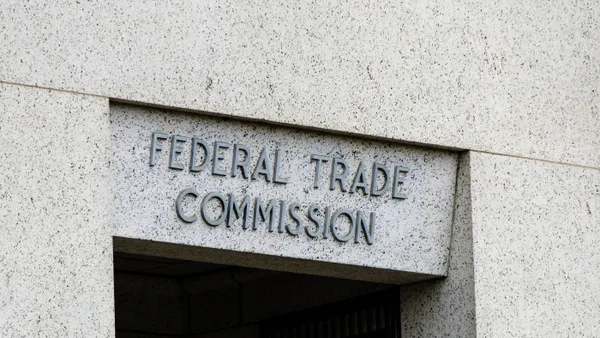Dive Brief:
- Companies facing mounting pressure to report on their adherence to environmental, social and governance (ESG) standards must choose from a confusing array of ESG rating agencies pursuing opaque methodologies, according to a panel of sustainability experts.
- “Transparency from the rating agencies is key, and also simplification, and a sense of not having this jungle out there that makes it difficult for organizations to find their way and find what is suitable for them,” Marleen Oberheide, sales engineering lead for EMEA, ESG and ethics at OneTrust, said Monday during a conference on sustainability sponsored by The Economist.
- Companies need consistency among both ESG rating agencies and reporting frameworks, according to Carine Smith Ihenacho, chief governance and compliance officer at Norges Bank Investment Management. “It’s extremely difficult for companies out there — a lot of companies want to do the right thing, but they’re just confused,” she said. “Maybe that’s why we don’t get the reporting that we want as an investor.”
Dive Insight:
CFOs confront rising demands from investors and regulators to provide detailed reports on efforts by their companies to align with ESG principles, with particular attention to climate risk.
The Securities and Exchange Commission (SEC) on Monday released a proposal that would require companies to release uniform, comparable disclosures on climate risk. When introducing the proposal, SEC Chair Gary Gensler said investors with $130 trillion in assets under management have pushed for the reports.
Companies would need to describe on Form 10-K their governance and strategy toward climate risk and their plan to achieve any targets they’ve set for curbing such risk. They would also need to disclose their greenhouse gas emissions, either from their facilities or through their energy purchases, and obtain independent attestation of their data.
Gathering, analyzing and reporting on ESG data is challenging, the panelists said. CFOs must choose from more than a dozen reporting frameworks worldwide, as well as from a host of ESG rating agencies run by Bloomberg, Moody’s, S&P Global and other firms.
“Companies’ disclosures are often insufficient or incomplete,” according to Ihenacho at Norges Bank Investment Management, which oversees Norway’s $1.3 trillion oil fund.
“We need disclosure that’s comparable across companies,” she said. “We need it to be harmonized.”
Companies and investors could improve the clarity and uniformity of information with the creation of a single portal where they would input data and organizations could extract the information that they need for ESG assessments, according to James Andrus, interim managing investment director at California Public Employees Retirement System (CalPERS).
“Currently, investors are not getting the information they ask for,” Andrus said during the panel discussion. “However, companies spend a lot of money providing the information they choose to provide.”
The SEC’s climate risk disclosure standards aim to overcome the lack of standardization, Gensler said Monday before the commission voted 3-1 for the proposal.
The rules would “provide investors with consistent, comparable, and decision-useful information for making their investment decisions and would provide consistent and clear reporting obligations for issuers,” he said.
The SEC, choosing from among several frameworks for disclosure, uses in its proposal the Task Force on Climate-Related Financial Disclosures and Greenhouse Gas Protocol. The rules are now subject to a two-month comment period.
If enacted, the SEC proposal would speed the growth of a “climate industrial complex,” SEC Commissioner Hester Peirce said before voting against the disclosure requirements.
The proposal “tells corporate managers how regulators, doing the bidding of an array of non-investor stakeholders, expect them to run their companies,” she said. “It identifies a set of risks and opportunities—some perhaps real, others clearly theoretical — that managers should be considering and even suggests specific ways to mitigate those risks.”












